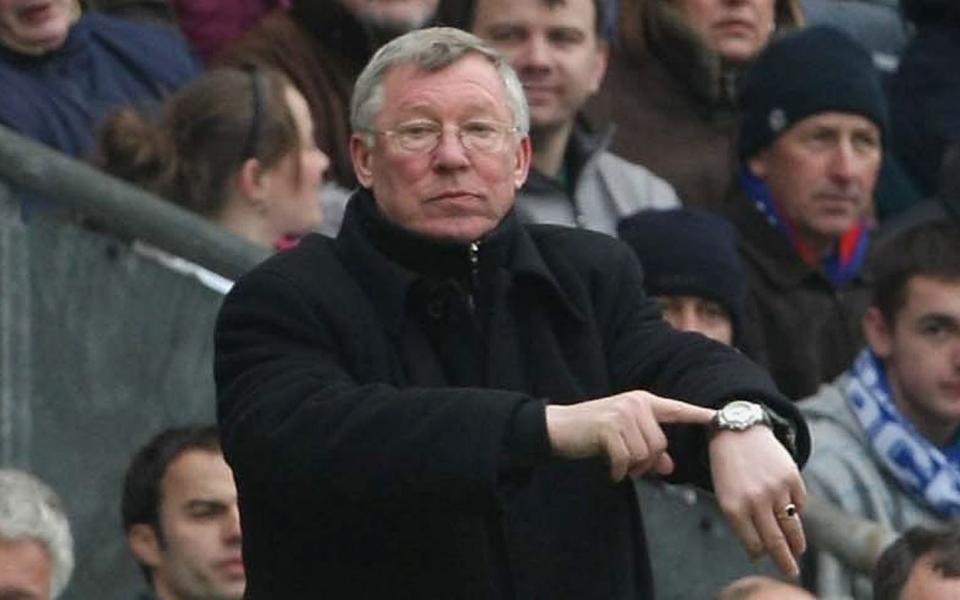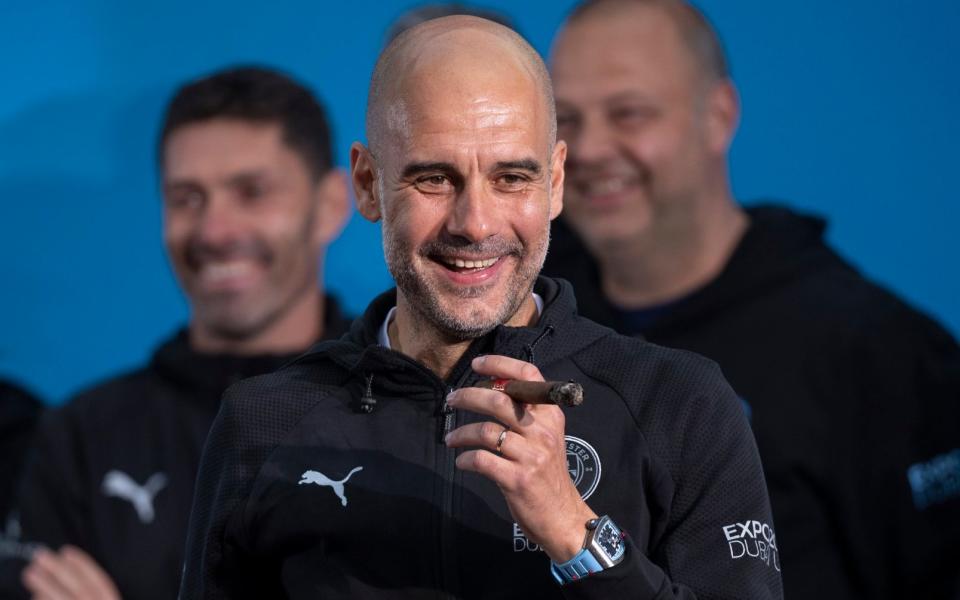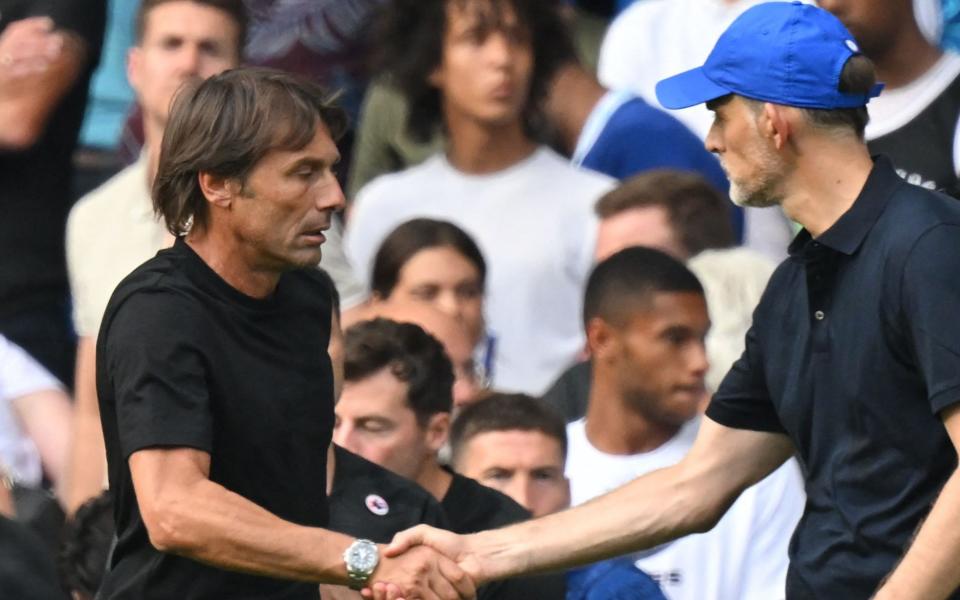Roy Keane tells a story about how he was introduced to a watch dealer by his Manchester United teammate Lee Sharpe. Wrist accessories weren’t exactly Keane’s style, but he was willing to pay the £1,150 he thought was the price. Turns out the watch cost £11,500, much to the amusement of the Old Trafford dressing room. “I still have it, and it has gone up in value. Who’s laughing now?” Keane joked.
Today, Premier League footballers follow a similar path. But while Keane’s investment was subconscious, players now see wristwatches as a smart investment, and part of their post-match wardrobe. Owning a racehorse or a bar carries a certain degree of risk, while luxury Swiss watches have become the safest bet for footballers.
What other product increases in value the moment the buyer leaves the store? Although some of the watches seen every week in the Premier League can cost £200,000, they are also one of the rare items that appreciate the moment they are purchased. When they walk out the door with their timepiece, it is already worth more than it cost.
Chelsea and England full-back Reece James recently gave an interview with GQ in which he went through his collection, which the interviewer estimated raised around £2 million for the photoshoot. He talks about becoming addicted to his collection, looking for ‘safe’ investments, but also about a collection that is personal to him and tailored to his style. Harry Kane, Virgil van Dijk and Marcus Rashford are mentioned as watch enthusiasts.
At Manchester City, Fabian Delph and David Silva are thought to have been trendsetters with the best watches in the world on their wrists. Now their open-top parades after the trophies are a catalog of the best timepieces in the world.
This group of Premier League royalty has an edge over other collectors. The main issue for the general public is actually getting their hands on these new wristwatches, even if they have the money. The popular Rolex brands have retailers with long waiting lists of years before a “Daytona” or a GMT “Batman” arrives.
In the windows of Rolex stores hangs the dreaded sign: For Exhibition Only. It is no longer the case that you walk into a store and buy a watch. Which Premier League stars have compelling arguments to climb the waiting lists. Managers have billions of fans closely watching every move on the touchline; the movements of players are visualized as soon as they leave the stadiums. They also have the wealth to quickly expand their collections – and investments.
“The watch often reflects the character, and there are different watches for different moods and occasions,” says Ramon Calliste, the former Manchester United striker who entered the watch business after his playing career and owns Global Boutique in Mayfair.
“It’s always nice to see managers with a good eye for watches and viewing complications. Some are louder, others are more subtle and do not carry gold. They are horses for courses and ultimately you can’t beat a Rolex.”
One of the iconic images of the Premier League is Alex Ferguson pointing to his digital watch and suggesting to the referee that there is still some way to go in stoppage time, or Fergie Time as it became known.


In the decade since Ferguson’s retirement, managers still remind officials of their timekeeping, but the wristwatches are likely to be Swiss and are among the most sought-after accessories in a world where demand exceeds supply and those who stalk the tech field know their Patek Philippe from their Richard Mille. Even tracksuit managers are now seen with rare Rolexes.
Just a cursory glance at football coverage is a showcase for timekeeping. Hublot, relative newcomers to the market, are thrown over the fourth official’s electronic board when he indicates how many minutes of injury time remain to be played. Hublot also has Gary Lineker on his wrist every week for his promotional photos for Match of the Day.
On match day, the wristwatch is as much a part of the manager’s ensemble as the tracksuit, baseball cap or tailored suit. Changes of clothing are rare in the technical field, but there are subtle bits of individual flair for those who look closely.
In the Premier League, Pep Guardiola is the king of wristwatches. Two seasons ago he favored an understated Rolex Cellini – white dial, leather strap – then returned to his Richard Mille 010 as Manchester City closed in on the title. For the Treble campaign he often wore an A Lange & Sohne Datagraph – together with his lucky bracelet – a watch for the serious horologist.


Guardiola is not alone in using Richard Mille, whose slogan is ‘a racing machine on the wrist’. The incredible cost of a watch – they trade for hundreds of thousands of euros – stems from the ‘tourbillon’ technology used. Roberto Mancini is an ambassador for the brand and RM11-04, a football-inspired watch, is named after him.
Other managers who clearly love watches include Frank Lampard, who often wore a Patek Philippe at Everton, a brand that is as difficult to buy at retail price as Rolex. In his interview, James joked that Lampard has “more Pateks than the catalogue”. Brendan Rodgers has been spotted wearing a “Nautilus” from Patek, while David Moyes has also worn the Swiss watch on the sidelines.


Clubs have links with the likes of Tottenham and IWC, while Hublot has been linked to Chelsea. But managers are free to wear their own clothes. This season at Fulham, Marco Silva is wearing a Rolex Explorer II.
Mikel Arteta is also a proponent of Rolex and wore a GMT throughout the All Or Nothing documentary, with his watch telling him the time in different time zones, which could be the most important function for a manager after a stopwatch. While at Spurs, Antonio Conte was a fan of Rolexes and owns a Daytona, the watch made popular by actor Paul Newman.
Calliste saw the popularity of watches when he was a player at Old Trafford and their popularity has only increased.


“Even when I was younger, 15 to 20 years ago, people would sit in their cars and watch,” Calliste says. “It’s a different perspective now because they are seen as assets and investments. To see some of these players who I still keep in touch with who have beautiful pieces in their collection and paid very good money many years ago, kept them in pristine condition and now they have gone through the roof. That’s what we want from all our investments.
“There are always people selling and it’s hard to know when to get in at the right time and get out at the right time, but I believe those who hold on are the ones who will win. Some may call you in error, but not all of them are investments. If you trust your heart, you might get ten years of enjoyment out of it and it can replace any profit.”
Dark side of the watch market
The dark side of the luxury watch market is that owners are being targeted by thieves. Robert Lewandowski’s watch was stolen outside Barcelona’s training ground as he signed autographs, and police later recovered it. In general, these watches increase in value, although the dramatic increase in value has leveled off recently. As the administrative merry-go-round speeds up and jobs are lost, these investments have remained valuable.
“I’ve been in this business for a while and have chosen a great path for myself because I saw these pieces being appreciated,” Calliste said. “They are rising in value, there has been a healthy correction which is more realistic because it became unsustainable how high they went. It became more and more dangerous. You couldn’t walk around with an £80,000 retail watch that is now worth £400,000 on the gray market.
“If you achieve that several times a year, you will make further progress. It’s the jackpot. There has been a dramatic increase over the years. It’s hard to know where it will go, a slow slope is healthy compared to a fast slope. At the moment the market is stable. It has gone from strength to strength.”